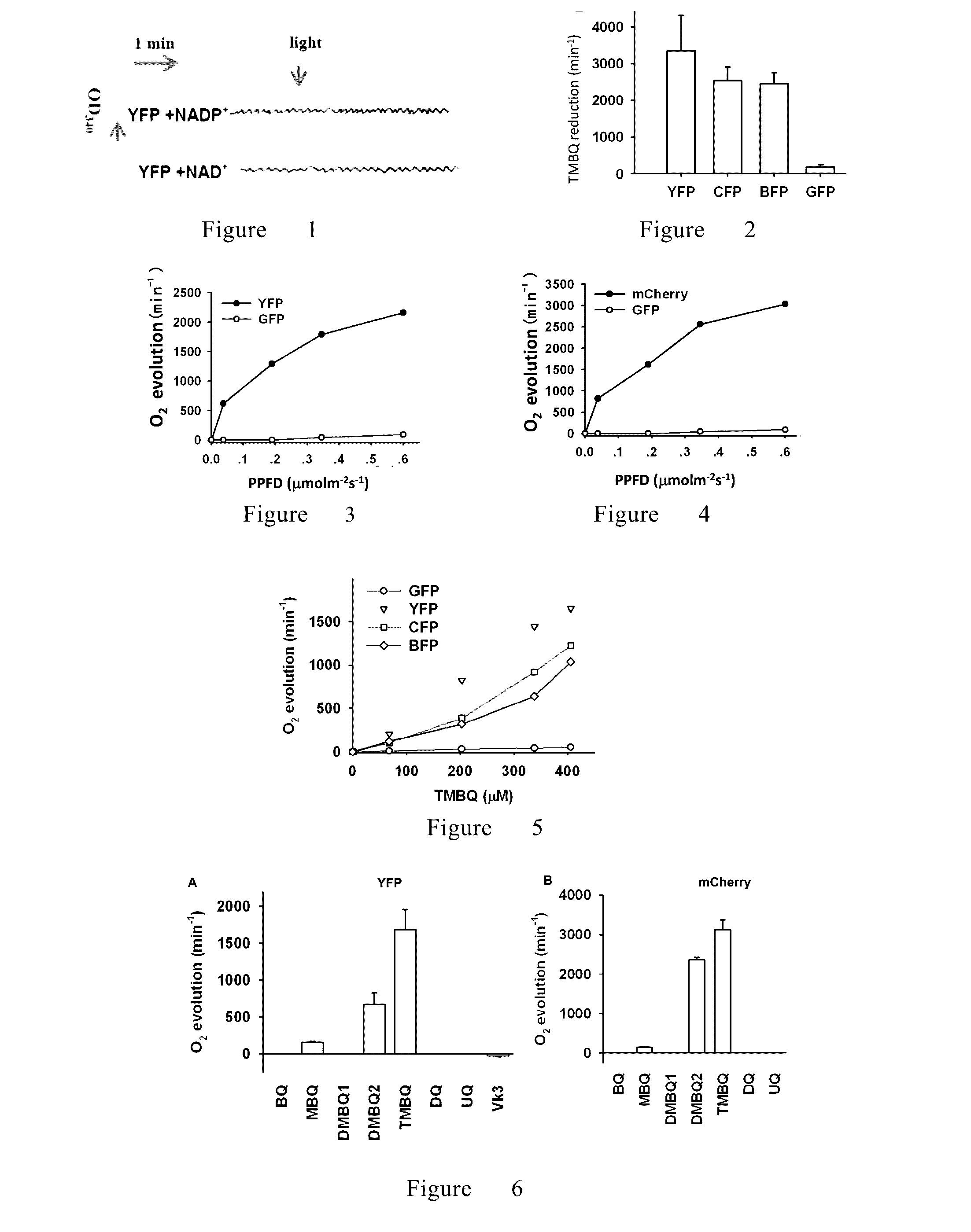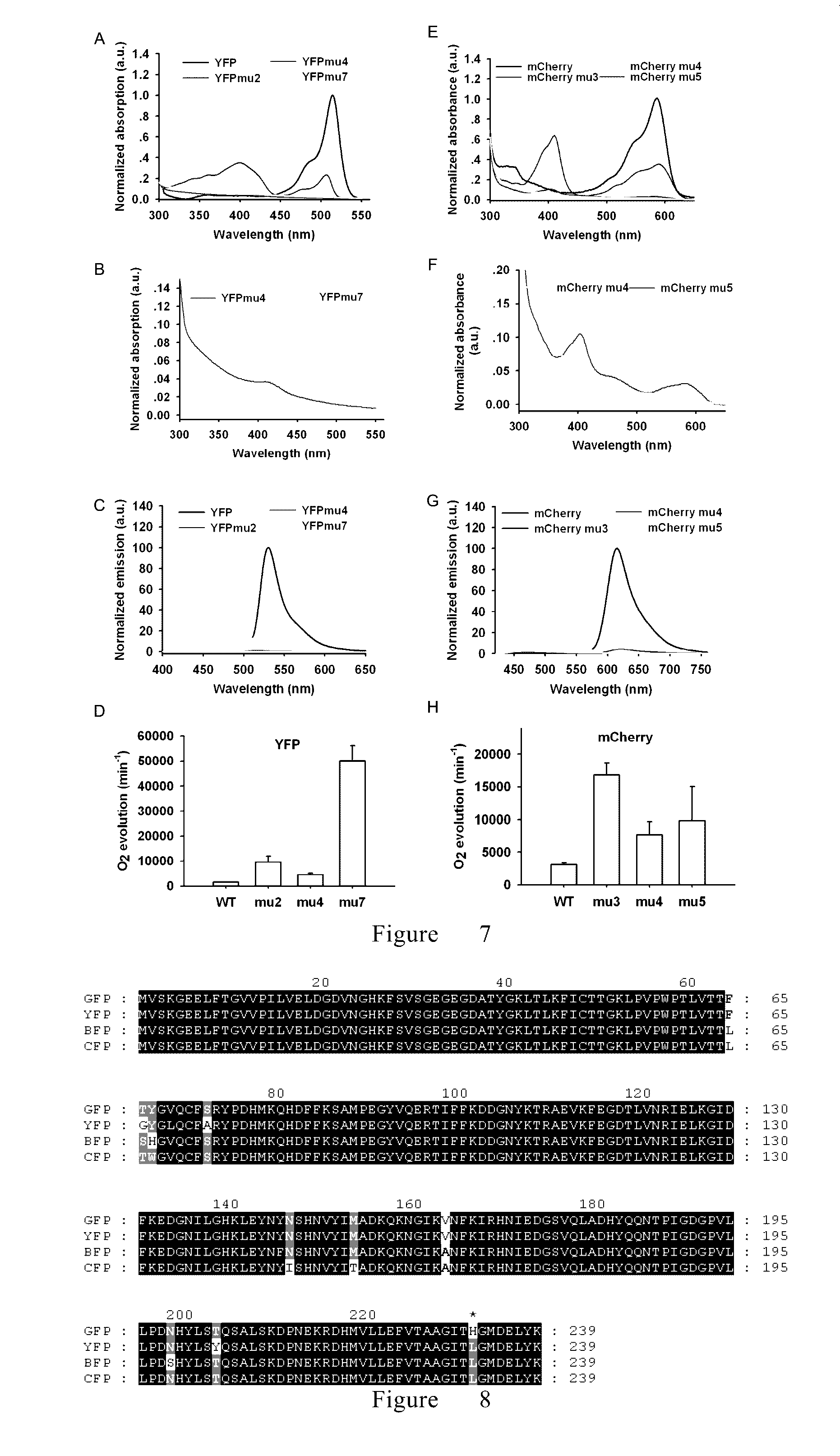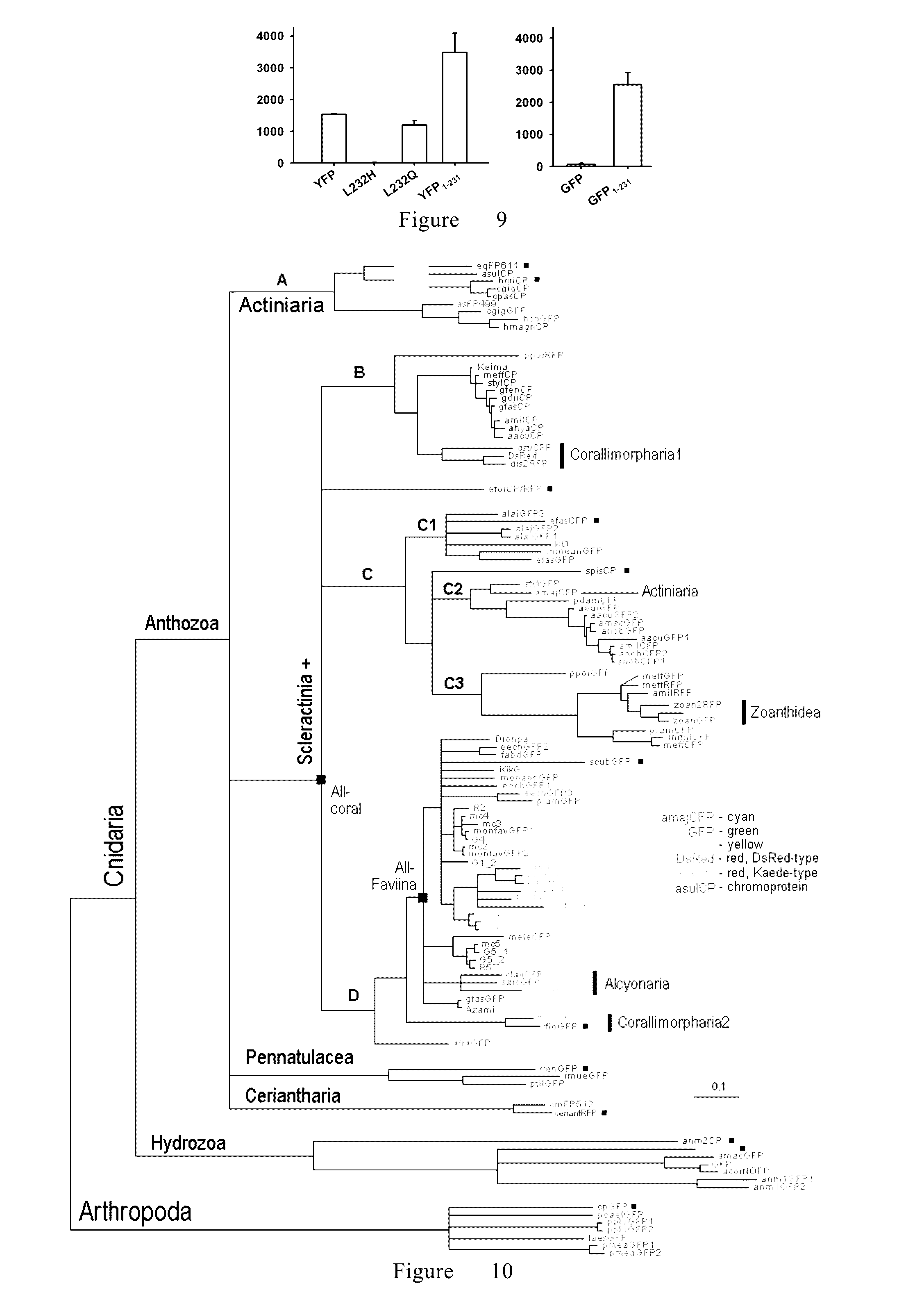Method for improving plant trait
a plant trait and plant technology, applied in the field of biotechnology, can solve the problems of harming plant cells, no approach has been confirmed to effectively increase the light energy utilization efficiency of plants, etc., and achieve the effects of increasing the biomass of plants, increasing the yield of plants, and promoting plant growth
- Summary
- Abstract
- Description
- Claims
- Application Information
AI Technical Summary
Benefits of technology
Problems solved by technology
Method used
Image
Examples
example 1
LEAT Proteins can Utilize the Light Energy and Catalyze the H2O Hydrolysis
1. LEAT Protein can Catalyze the Analogue of Plastoquinone 2,35-trimethyl-1,4-benzoquinone Reduction Under Light
[0330]It was reported that proteins such as GFP can function as electron donor to reduce the oxidized small compounds such as NAD+, potassium ferricyanide, and some proteins such as cytochrome c, and FAD-containing proteins (Bogdanov A. M. et al, 2009, Nature Chemical Biology. 5:459-461), The invertors used E. coli to express and purify recombinant proteins. Although pre-illuminated YFP and mCherry can function as electron donors, 1 LEAT protein only can provide 1 electron, and therefore cannot continuously provide electrons under light (FIG. 1). Quinone reduction under light was analyzed by monitoring the decrease of absorption at 436 nm.
[0331]LEAT protein can function as a kind of pigments like Chl a in the reaction center, catalyze the the reduction of methyl quinones and their variants, such as t...
example 2
Comparison of the Water Hydrolysis Activities Under Light of LEATs with Different Origins
[0336]Among 110 fluorescent and chromophore proteins from Cnidarian and Arthropoda (Table 1), 9 fluorescent proteins and 3 chromophore proteins were selected (FIG. 10). These 12 proteins are belong to A, B, C, D and other different limbs of the phylogenetic tree (FIG. 10). These 12 proteins together with GFP and dsRed series of fluorescent proteins cover almost all different types of fluorescent and chromophore proteins reported (Alieva et al., 2008, Diversity and evolution of coarl fluorescent proteins. PLoS One 3(7): e2680, doi:10.1371 / journal.pone.0002680). Big differences exist between the 12 proteins and GFP or dsRED series of fluorescent proteins in molecular evolution and amino acid sequence homology (FIGS. 11A and 11B). Although the intensify of fluorescence, absorbance and fluorescence spectra of these recombinant proteins expressed in E. coli are different, they all showed activities o...
example 3
Study on LEAT Protein (mCherry) Transgenic Plants
1. Expression of mCherry in Brassica Increased Net Photosynthesis Rate, Plant Growth and Biomass of the Transgenic Plant
[0337]The mCherry transgenic Brassica was confirmed. The results of Southern blot analysis of mCherry transgenic Brassica was shown in FIG. 13B. The fluorescence signal of mCherry expressing in the root cells of transgenic Brassica was observed (FIG. 13C). Results of RT-PCR and Western blot analysis of transgenic plant line (L1-L6) were shown in FIG. 13D. The mCherry protein localization in plant cell was analyzed by electron microscopy and immunolabeling as shown in FIG. 13E. The above results suggested that L1-L6 are positive transgenic mCherry lines, and mCherry protein was expressed in cytosol (Cy) and nucleus (N) of the cell. In this invention, T2 generation of mCherry transgenic Brassica was used for the experiments.
[0338]In this invention, three lines of mCherry transgenic Brassica were selected and the conten...
PUM
| Property | Measurement | Unit |
|---|---|---|
| Fraction | aaaaa | aaaaa |
| Volume | aaaaa | aaaaa |
| Energy | aaaaa | aaaaa |
Abstract
Description
Claims
Application Information
 Login to View More
Login to View More - R&D
- Intellectual Property
- Life Sciences
- Materials
- Tech Scout
- Unparalleled Data Quality
- Higher Quality Content
- 60% Fewer Hallucinations
Browse by: Latest US Patents, China's latest patents, Technical Efficacy Thesaurus, Application Domain, Technology Topic, Popular Technical Reports.
© 2025 PatSnap. All rights reserved.Legal|Privacy policy|Modern Slavery Act Transparency Statement|Sitemap|About US| Contact US: help@patsnap.com



